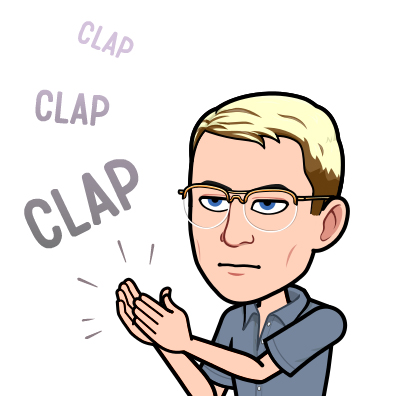
People gather before marching in memory of Charlie Kirk in Peoria, Ariz., on Sept. 13, 2025. Photo: Charly Triballeau/AFP via Getty Images
It would be easy to believe America is tipping into an era of rampant political bloodshed.
In the wake of Charlie Kirk’s assassination, voices from across the spectrum sounded alarms that the shooting was just the latest flashpoint in a rising tide of violence.
Progressive commentator Hasan Piker, shaken after watching video of Kirk’s murder, warned his audience of “people looking for decentralized forms of violence.” A Reuters analysis was even more blunt, declaring Kirk’s killing “a watershed moment in a surge of U.S. political violence.” Even Utah’s Republican governor mused whether this marked “the beginning of a darker chapter in our history.”
These aren’t the first calls for open strife. When Donald Trump himself was shot last year, some right-wing figures rushed to declare it the opening salvo of a new civil war.
Are we on the brink of another 1960s-style season of political assassinations and unrest?
A funny thing is happening beneath the apocalyptic headlines: Rather than surging, key indicators of political violence and extremism in the U.S. have actually been trending downward in recent months. New findings from the Armed Conflict Location & Event Data Project, or ACLED, show that protest and extremist activity has dropped significantly nationwide.
In August, the number of public demonstrations in the U.S. plummeted by nearly 40 percent compared to the month before. A much-hyped progressive day of action called “Rage Against the Regime” fizzled with only modest turnouts, contributing to the sharp decline in protests.
And, perhaps most tellingly, organized extremist incidents — rallies, hate marches, militant group meet-ups — fell off a cliff. ACLED reports that extremist group activity dropped by over one-third in August, hitting its lowest level in more than five years. It’s part of a steady decline in far-right mobilization that dates back to 2023.
In other words, according to ACLED, by the time commentators were warning that Kirk’s murder heralded a new wave of violence, extremist activism on the ground was at a multiyear low.
Five-Year Low
The contrast between the panic-stricken narrative and ACLED’s hard numbers is striking. Yes, politically motivated attacks still occur and can be horrific. Yet the broader trend in extremist mobilization suggests less organized violence, not more.
ACLED’s data-driven analysis notes multiple factors behind the slump. There are possibly more clandestine tactics by groups. Leadership failures could account for a lack of organization. And a big one: There is a loss of “urgency” among extremist followers because they see their views reflected in mainstream politics.
It turns out that when your side is already winning, you don’t need to storm the barricades.
Even Princeton’s Bridging Divides Initiative, which closely monitors political violence across the country, acknowledges that incidents remained relatively low in 2024. Their analysis, grounded in real-time event tracking, confirms that, while we’ve seen marked upticks in threats recently, the overall trend in political violence has declined since the peak years around 2020.

The Southern Poverty Law Center, or SPLC, observed the same phenomenon in its latest Year in Hate and Extremism report. The SPLC counted 1,371 active hate and extremist groups in 2024, down from 1,430 in 2023. The group concluded the slight drop “does not signify declining influence” at all. Rather, it’s because many on the far right “feel their beliefs have become normalized in government and mainstream society,” according to the report.
In plain English: Why organize a fringe militia when your agenda is being adopted on Capitol Hill and made into policy by the White House?
This dynamic helps explain why the immediate wake of Kirk’s assassination hasn’t unleashed the spate of tit-for-tat violence some feared.
Why organize a fringe militia when your agenda is being adopted on Capitol Hill?
The far-right ecosystem, which in years past might have exploded with vengeful rallies or vigilante reprisals, has been relatively muted in terms of on-the-ground action. To be sure, there was plenty of online fury and calls for crackdowns. Offline, organized extremist events, though, remain in a lull.
The shock and outrage did not translate into a Proud Boys revival or a new wave of militias taking to the streets.
Energy on the left, meanwhile, is already flagging. Its protest movements have been quieter than expected during Trump’s second term.
Progressives pulled off several “days of action” earlier in the year, but by late summer the protests were losing steam. The energy that fueled huge anti-Trump demonstrations in 2024 ebbed, reflected in the 40 percent drop in protest activity.
At least for now, both sides of the spectrum are mobilizing less in the streets — albeit for very different reasons.
An Advancing Agenda
All of this leads to an ironic possibility: Political violence may be declining largely because the would-be perpetrators feel they don’t need it anymore.
The American far right, once relegated to the fringe, now sees its formerly “extremist” ideas being enacted through mainstream institutions.
As the SPLC report noted, positions that might have once only been pushed via hate rallies — anti-LGBTQ+ hostility, attacks on “woke” education, dismantling diversity programs — have seeped into legislation and school board policies.
In 2024, militant groups harassed diversity and inclusion efforts, and soon after, Republican lawmakers, egged on by Trump, moved to ban discussion of race and gender in classrooms.
After Kirk’s killing, White House deputy chief of staff Stephen Miller went on Kirk’s podcast to vow revenge on left-wing groups. Vice President JD Vance, for his part, announced his intent to attack two of the top liberal foundations and a historic magazine of the left.
Guns and intimidation aren’t necessary.
The decline in violent extremism is welcome, but the apparent reasons behind it should give us pause. What does it say about the state of the country when extremists stand down not because they’ve been defeated, but because they think they’ve won? It suggests that the battleground has shifted. The fights that once took place at the margins — in backwoods compounds or tense street protests — are now unfolding in courtrooms, statehouses, and school boards.

Liberals know it too: The relative quiet on the left could well be a sign of resignation, as if even the opposition recognizes that the hard right’s agenda has the upper hand.
America may be “a very, very dangerous spot” as one expert told Reuters, but not for the reasons cable news would have us believe. The danger isn’t an impending civil war in the streets; it’s a creeping normalization of hard-line political goals that no longer require mob violence to be realized.
The assassins and agitators are stepping back, confident that the system now carries their torch for them.
The danger isn’t an impending civil war in the streets; it’s a creeping normalization of hard-line political goals.
Still, Kirk’s assassination cannot be brushed aside. For all the evidence that political violence has ebbed, singular events can act as catalysts, jolting extremists out of dormancy. This killing could become a ramp toward a new future of violence.
If history is any guide, however, it won’t be in the form of clashes. The capacity, and appetite, for that kind of confrontation seems to have dwindled.
Today’s great danger likely isn’t open war in the streets, but the quiet march of an extremist agenda already advancing through institutions. That may bring with it an even greater violence.
Next time, instead of copying the entire article here on Beehaw, use an archive link. There are copyright issues that we are not prepared to fight and could lead us into problems.
Got it. This is just a crosspost from the RSS bot of all content that they sent as part of the RSS feed (it’s not dodging around a hard paywall), but I’m happy to crosspost without that stuff if that’s better.
Yes, politically motivated attacks still occur and can be horrific. Yet the broader trend in extremist mobilization suggests less organized violence, not more.
This article is sane washing or the writers need to be far more clear about their definitions.
They’re claiming political violence is down, while conflating political violence, extremist violence, and event specific violence one paragraph to the next.
The reason this is a terrible take is because you currently have unprecedented levels of State violence through organisations like ICE.
The violence being perpetrated by ICE is the most political of political violence. It was promoted, expanded and sent forth by the extremist politicians with an extremist agenda.
By this articles definition of political, the Stasi were simply your local bobby there to help get a cat out the tree.
Sane washing, is normalisation of the extremism wielding power, something the writers warn against. They should consider that advice themselves.
What you are saying is, more or less, literally the point of the article: That it might sound good but it’s a bad bad development because a lot of what used to motivate people to commit extremist acts is now getting normalized within “the system.” You stopped reading exactly one paragraph too early.
My thoughts reading this, considering most “political” violence came from right-wing extremists was “oh yeah of course the violence is down, they’re either now part of the government doing the violence or are finally feeling content that the government matches their extreme views.”
No i didn’t, they didn’t highlight ICE particularly, and postulate that maybe these groups are inactive because they’re all joining that organisation; They didn’t state the violence coming from the State; they euphamised it with ‘their policies’.
Edit: They also suggest political violence is down, as i say at the top of my first comment, they need to define their terms carefully. They use three different measures that count different things. State violence is political violence, the fact they say political violence is down without even a qualification is a tacit legitimisation of the State as non-political in their measures. This is an absurdity, no matter the regime in power.
The article attempts to explain a lower level of political violence gesturing that its because of State “policies”, call the spade a spade, its State violence.
So, we can definitively say it did play in Peoria. (and unsurprisingly so, unless the West Valley had wildly changed in the last … oh, shit. I’m fucking old. It really has been nearly 30 years, so I know nothing about the greater Phoenix area.)
Yeah, but the right can’t outrage farm to distract from the Epstein files with that info.






